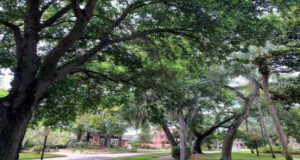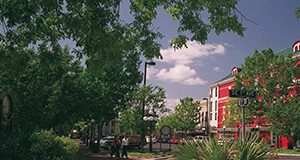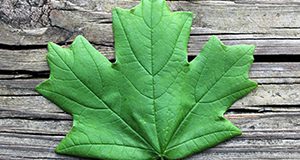This new 13-page article combines canopy coverage data from all of Florida’s metropolitan and micropolitan areas with ecological models developed by the USDA Forest Service to calculate several key benefits of urban trees and an approximation of their monetary value. Benefits of urban trees include carbon sequestration/storage, air pollution filtration, and stormwater mitigation. Written by Drew C. McLean, Andrew K. Koeser, Deborah R. Hilbert, Shawn Landry, Amr Abd-Elrahman, Katie Britt, Mary Lusk, Michael G. Andreu, and Robert J. Northrop, and published by the UF/IFAS Environmental Horticulture Department.
https://edis.ifas.ufl.edu/ep595
Tag: Michael G. Andreu
Executive Summary of Gainesville’s Urban Forest in 2016
This 2-page fact sheet written by Michael G. Andreu, Caroline A. Hament, David A. Fox, and Robert J. Northrop and published by the UF/IFAS School of Forest Resources and Conservation describes a 2016 ecological assessment of the urban forest in the city of Gainesville, FL. It provides a detailed look into some of the economic and ecological values of the forest to enhance understanding and improve urban forest policies, planning, and management, as well as to provide empirical data for the inclusion of trees within environmental regulations.
http://edis.ifas.ufl.edu/fr417
Values and Ecosystem Services of Gainesville’s Urban Forest in 2016
The urban forest is a crucial factor in the well-being of a community because of the aesthetics, health benefits, and cost-savings that it provides. The urban forest is our habitat, and we must manage it in ways that will provide the benefits we need and desire. This 3-page fact sheet written by Michael G. Andreu, Caroline A. Hament, David A. Fox, and Robert J. Northrop and published by the UF/IFAS School of Forest Resources and Conservation describes an urban forest ecological analysis conducted in 2016 in Gainesville, Florida, by the University of Florida in partnership with the Parks, Recreation, and Cultural Affairs Department to quantify the vegetation structure, functions, and values of the urban forest.
http://edis.ifas.ufl.edu/fr414
The Structure and Composition of Gainesville’s Urban Forest in 2016
Trees in cities were formerly thought of merely as a collection of individuals found along streets and incorporated into landscaping. However, urban trees are now viewed as being part of a unique forest type, and understanding the urban forest’s structure and composition is an important first step towards managing it. This 4-page fact sheet written by Michael G. Andreu, Caroline A. Hament, David A. Fox, and Robert J. Northrop and published by the UF/IFAS School of Forest Resources and Conservation aims to provide a broader understanding of the urban forest in the city of Gainesville, Florida.
http://edis.ifas.ufl.edu/fr413
How to Use a Dichotomous Key: A Tutorial Featuring 10 Common Shade Trees of the Tampa Bay Area
A dichotomous key is a tool used to help identify an unknown organism. This twelve-page fact sheet features a key of leaf characteristics for ten common broadleaf trees in the Tampa Bay Area. Accurately navigating this series of paired, either-or choices about leaf characteristics will lead the reader to identify the correct tree from the group of ten. Written by Andrew K. Koeser, Gitta Hasing, Michael G. Andreu, and Melissa H. Friedman and published by the Environmental Horticulture Department.
http://edis.ifas.ufl.edu/ep510


